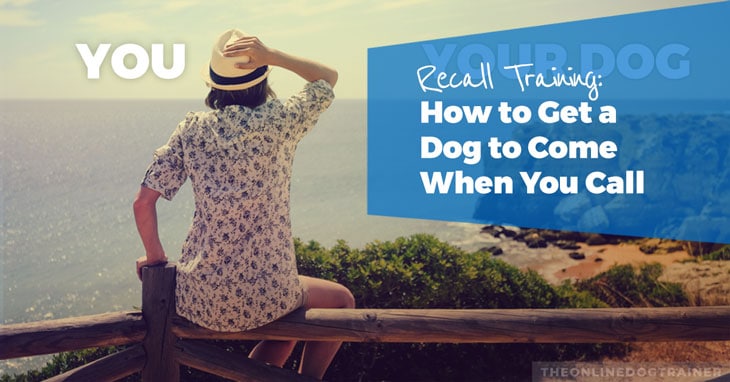
There’s nothing scarier than watching your dog run off across the beach, down the street, or through the woods while you helplessly call for him to come back to you without any luck.
It only takes seconds, for a dog to vanish before your eyes—all because your dog is excited and decided to chase a squirrel or heard another dog in the distance and wanted to check it out.
What might seem like fun adventure to your dog quickly turns into panic and overwhelm for you.
You may start thinking to yourself,“What if she gets lost and can’t find her way back?”
Or, “What if my dog get’s hit by a car?”
As a dog parent, I know this feeling all too well. Which is exactly why I stress the importance of recall training—how to get a dog to come when you call—in all of my training programs as well as when I’m working with individual clients.
Not only can recall training save your dog's life, but it can also keep other people and dogs safe in the event that your dog takes off after a person or other animal.
So, here’s the million dollar question… “How DO you get your dog to come every time your call her?”
Keep reading and you’ll find out…
7 Secrets To Training Your Dog To Come When Called, Every Time!
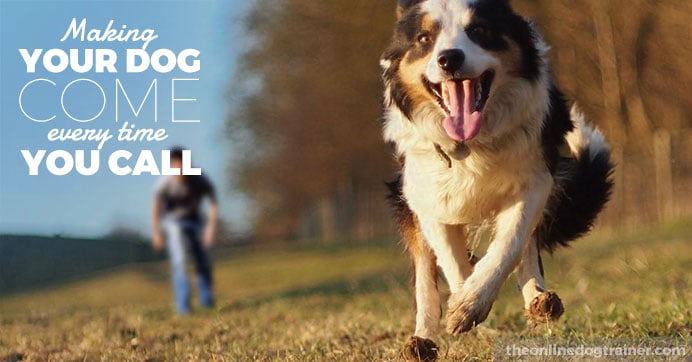
Dogs and puppies NOT coming when we call them can be one of the most frustrating things!
We ask nicely, we call them, we shout and scream… We even begin to wonder if our dog or puppy has a hearing problem!
Even worse is when they’re running wild at the park and we have an audience watching us…so embarrassing!
Let’s face it, most dogs only come when they want to. You know, when it’s dinner time, when they want a pat or when there’s nothing else going on!
So what can you do to train your dog to come when called? Here’s 7 recall training secrets that will help you out…
1. Tasty Treats
Yes I know, we all hate bribery… BUT trust me on this one thing. If there is ever a time to use food to train your dog, then it’s when we’re developing the recall command.
I’m actually not a fan of using food when it comes to stopping behavioral issues, but this is different. This is asking our dog to do something as fast as they can and we need to reward (or pay) them so that they do it.
Think of the food as payment… After all, would you keep going to work if they stopped paying you?
So, when you ask your dog to stop playing with their best friend and come running–all the way back to you down the beach–they need more than just a pat!
Making sense?
Of course later on we can fade out the food, but for starters it’s ok to use treats.
2. Keep control
One of the most common questions I get asked is what do we do when our dog is running away and won’t come back? And the answer is simple…
There is not a lot you can do.
It’s the same as when a horse has bolted out the stable and is galloping off. They are out of control!
You see there are really only two ways to get our dogs to come to us…
The first way is when we still have physical control of them–so, they’re on a leash or a long line and we can get them to come to us with a bit of encouragement.
The second is that we have a verbal recall, in other words when we call them they listen and choose to come running!
So, if we don’t have a good recall we first need to consider option one by purchasing a line to attach them to. The safest way is to attach the line to a clip on the back of a dog harness.
If it’s just on a dog’s collar and you stop your dog abruptly you can injure your dog, so a word of warning there.
That said. This line will give you the opportunity to keep control and then train the recall – it’s a game changer!
Remember, without control and no recall, our dogs are by definition “Out of control.”
Don’t let that happen.
3. Set your dog up to win
Okay, this is a very subtle concept, yet hugely powerful. Let me first describe a typical scenario that occurs with a lot of dogs…
As soon as your dog is let off leash he runs off, happy as can be. He has heaps of energy and runs away fast. Often your dog may pick up on a smell or see another dog and go visit.
You, knowing that your dog has recall issues, starts to panic and you want to keep your dog under control so you make the decision to immediately try and call your dog back closer. But, your dog is so full of energy and delight at being free that the chance of him coming is next to zero. So why did you call the dog?
Was the dog doing anything wrong?
No.
Was the dog going to run off into the sunset?
No.
Was there any danger?
No.
Is the reason our dogs are off leash so they can run, sniff and play?
Yes.
Was the dog going to have a sniff or a quick play and then follow you?
YES!
In this case, we’re MUCH better off waiting until our dogs have had a quick run around and are coming TOWARDS us before calling them. One they’ve had a bit of freedom, then you can crouch down, give him a treat and let him go.
This is the concept of “Setting the dog up to win.”
We need to let our dogs have fun and call them only when we know they are going to come. Less is actually more. So only call your dog a few times. That keeps it special.
If your dog is totally focussed on something such as another dog, try just giving him a bit more time or maybe move closer to him or go and get him calmly.
Remember good dog trainers NEVER call the dog when they know they aren’t going to come!
4. Give one clear, constant command
Let me ask you a question…
How many different names, phrases, or voices do you use when you call your dog?
Come on, be honest! Most people have a whole selection of commands. Some when the dog is in trouble, some when there is a treat coming. And the truth is that all these different words, terms, and tones of voice just add to our dog’s confusion.
We really just want one word or phrase that we use every time we ask a dog to come and we want it to be in the same consistent tone. This word or phrase should mean “Come here and I’ll put food in your mouth and then I’ll let you go and play again”.
The more phrases, voices and sounds we use the more inconsistent it is for our dog or puppy. I know it’s not always easy, but staying calm and using a consistent command, even when our dog isn’t coming, is crucial if we want him to come.
And whatever we do, don’t tell them off when they finally arrive, just clip the leash on and ignore them. It’s so easy to instantly ruin a great recall when we scold them angrily when they finally do come. It becomes a vicious circle and the next time we call them they’re even less likely to come.
So remember: That one clear command needs to mean “Come here and I’ll put food in your mouth and then I’ll let you go and play again!”
5. Use the (HUGE) power of random rewards
Why do people play the lottery? To maybe win ten bucks? No…of course not.
Everyone’s playing to win the ten million dollars. We want to win HUGE and that’s what gets us hooked and coming back for more.
And guess what… It’s the same with our dogs! If they never know when they’re going to win next, or what they’re going to win, they’ll keep playing.
So, it’s random rewards that work so much better than just using the same food every time. There’s a huge difference in performance between a dog who knows the reward is just a dry biscuit at best (probably the same dry biscuits they ate for breakfast) and a dog who thinks they may get a piece of that yummy sausage, a morsel of cheese, or their favorite treat.
Just like humans… I know what I’d do for one million dollars compared to what I’d do for a single dollar.
And, just remember, the key is to keep our dogs guessing. They shouldn’t know which of the treats they are going to get. That’s the random bit!
Now, one simple way to do that is to have all the treats in a little bag or pocket and only bring the treat out once your dog has arrived. That way they can’t see what the random reward will be. And sometimes give your dog more than 1 little piece (Yep, small pieces is better) and sometimes give your dog 5 little pieces of different treats in a row. That’s random.
The day you take half a chopped up sausage, a little piece of cheese and some other yummy treat you will see what I mean. You won’t be able to get your dog to leave your side!
One sure way to win your dog or puppy’s heart is through their belly!
6. Increasing the motivation
Now this secret to success is understanding how to increase your dog’s motivation and drive to work for YOU.
Very simply… a hungry dog will work for food. A dog who is full will generally lose interest.
So, try taking your dog for a walk before you feed him. This way they’re hungry and far more motivated by the treats. Over time, you’ll start to realise that you actually have breakfast in your pouch and they have to “work” for it. It becomes a game
And most dogs LOVE running and eating so it should be fun! It’s actually much better for a dog to eat meals AFTER any vigorous exercise for the same reason it’s not good for humans to exercise straight after a large meal.
7. Consider the use of a professional dog whistle
Have you ever wondered why so many farmers use dog whistles? And why more and more professional dog trainers are starting to use them?
The answer is simply because they’re easy to use and they work! In fact, they’re one of the most useful tools when used correctly.
Here’s why:
The whistle has a constant sound. It doesn’t matter if you’re a bit frustrated with your dog or in a rush or upset, when you blow it the sound that emanates is constant. And your dog responds to that neutral sound very well.
Whistles are easy to use. A professional dog whistle is very easy to blow (be careful of the metal ones when it’s really cold though as I’ve had them stick to my lips).
The sound of a whistle travels a long way, a lot farther than you can shout. Voices don’t travel that well, especially if you have a quiet voice. The whistle that I use can travel up to 500 feet and it’s gentle on your vocal chords!
Easy to hear. Good dog whistles operate at a high frequency. This means that they can pick up the sound easily and it’s appealing to them, but not at all harsh on the human ear.
The high pitch also cuts through all the background noise such as other people shouting, wind, trees and bushes because it’s such a unique sound.
Using a whistle saves your voice. You never need to shout or raise your voice in front of people ever again.
Fresh start. For many people the quickest way to develop a great recall is to start again with a fresh sound. The whistle gives us this chance.
For more info in the 7 secrets to recall training, check out the full blog here.
How to Train Your Dog to Come Every Time
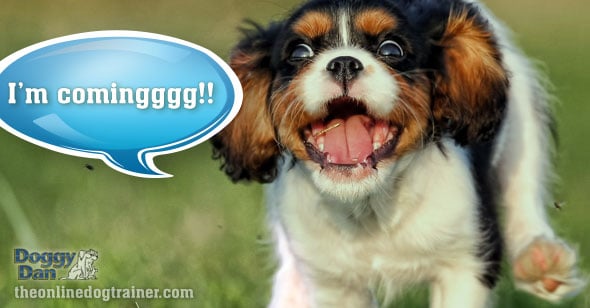
Recall training is all about getting your dog to return to your side on command. And in theory it’s so simple. You call your dog and they come running towards you wagging their tail.
Yet in reality so many people struggle with this. Unfortunately it results in dogs being walked only on by leash their entire lives, or worse still, they aren’t walked at all for fear of them never coming back.
To discover how to get your dog to come every time you call, take a listen to this podcast from Doggy Dan himself.
For additional info, check out the blog in full here.
How to Get Your Dog to Sit, Wait, and Come!
We all love it when our dog comes first time (I call this the recall) but it doesn’t always happen that way and it doesn’t happen overnight.
To develop an amazing recall where you can call your dog from extremely long distances, or off a high speed chase takes time, a strong bond and a dog that really listens and does what you say even though sometimes they would rather do something different.
I am proud to say that I have called my dog off a high speed chase when she caught sight of a bunny and bolted. On my call she stopped, turned and came straight to me. And as you can see in the video below, I’ve called my dogs from the neighbors yard. This is something to aim for and with everything, practice makes perfect!
Pretty neat, right?
It might look easy, but this type of recall training took some work—even for me as a dog trainer. This type of command training simply doesn’t happen overnight.
So, while you’re working with your own dog, here’s a few things I want you to think about while working with your dog…
What your praise is worth? You decide the value of your own affection, pats, cuddles and praise. Does your dog just get it for free?
Make everything on your terms. Never give your dog a pat, cuddle or affection on its terms or you are making it worthless in your dog’s eyes.
Recall training starts at home. Calling your dog around the house is the start of the recall.
Call your dog once. Never call your dog lots of times. Make sure that your dog has heard, then treat or ignore.
Encourage. You can encourage your dog to keep coming by saying the words, “good girl, good girl” in a high energy voice.
Use a gentle voice. Your voice should be soft, gentle and encouraging. Not threatening. The quote, by horse whisperer Monty Roberts, sums it up: “Use as little as possible, but as much as necessary”. You can always use a more commanding voice when you need to outside, off leash.
Motivate your dog. Find out what your dog loves and start by using this
practice training before dinner. This way your dog is hungry and very motivated.
Use some of your dog's dinner to train. Take a portion of what your dog receives for his dinner and use it to train so he is not over fed.
For additional tips and tricks, read the entire blog post here.
The last thing I want to mention that may be helpful to you is The Dog Calming Code program. This program is designed to teach you to teach your dog how to calm down and listen to your instruction when it matters most.
Check out The Dog Calming Code here.
(Or, if you have a puppy, you might want to get started with my Puppy Coach training program here!)
I wish you the best as you work with your pup!

~Doggy Dan






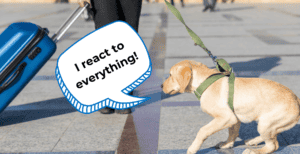
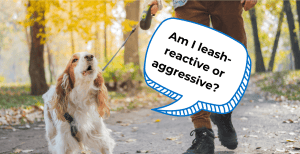
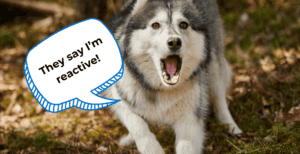
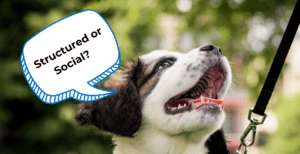

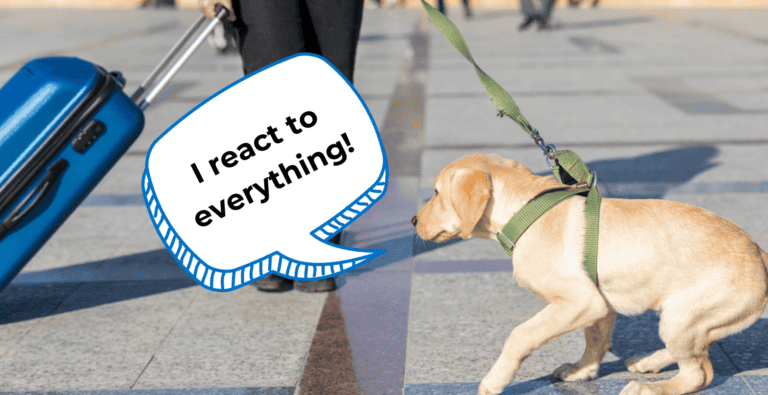
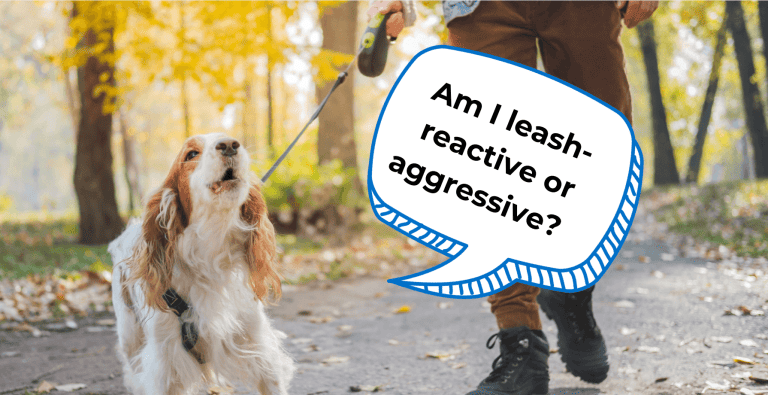

6 Responses
Do you have any tips on helping with dog aggression. My Chihuahua is 15months old and I can’t even take her to a dog park, she attacks the other dogs even when the other dog shows signs of submission. And now I can’t even watch an animal show on tv with her in the room cause she goes bananas. I think it is fear aggression. Thanks, Dolores
Hi Dolores, have a look at a recent Blog I wrote relating to Aggression (link below) as i think it will help you understand why your dog is behaving this way and what you need to do to help her relax around other dogs. My website TheOnlineDogTrainer.com also shows you very clearly how to achieve this…maybe take a quick look…its a $1 trial for 3 days…all the best Doggy Dan
https://theonlinedogtrainer.com/training-aggressive-dogs-understanding-dominant-and-fearful-aggression/
The whistle you sent me works very well for my lively border terrier. Even after not using the whistle for weeks, I whistled and he gave up his own plans and came running. (It no longer works for my old English setter because he is going deaf.)
Hi Jewel, isn’t it great when you realise your dog has mastered recall?! It’s just a freedom to be able to allow a dog off-leash time and know that they will return to you when you ask. Well done, keep it up! Doggy Dan
We did your whistle training with Reddington Sparrow (Red), chihuahua x, when she was 16 weeks old. She was off lead first day after some initial work on a longline, and had 100% recall without distractions on that first day. She’s just turned 10 months and her recall is excellent apart from the time she found a piece of discarded cake at the dog park, or possum poo – which takes a couple extra whistles as she enjoys munching on that when I’m not looking. When I have her off lead at the beach eg Long Bay, and she’s started to run towards a trigger eg kids/birds, I will blow the whistle twice and she’ll circled straight back. As a fearful dog she has a bunch of issues but recall does not seem to be one of them! 🙂 x Sam & Little Red
Hi Sam, thanks for the great feedback! Starting off with good recall training at a young age is always really helpful in mastering this command, especially around distractions. We don’t expect recall to be 100% all the time because dogs aren’t robots but if the majority of the time Red responds then it sounds like you have done a brilliant job teaching her to come when called. Keep up the great work! Doggy Dan